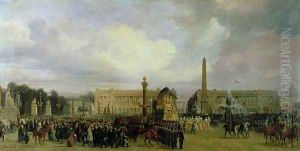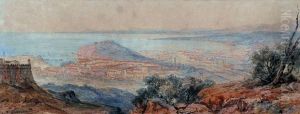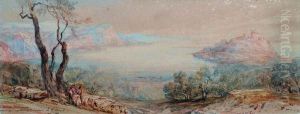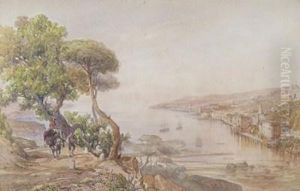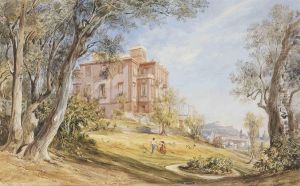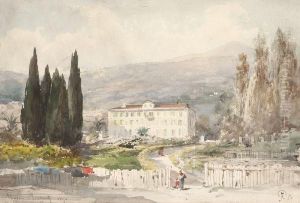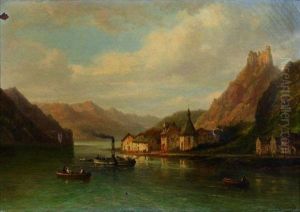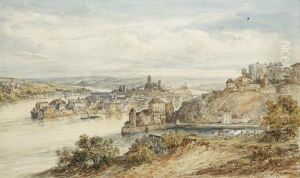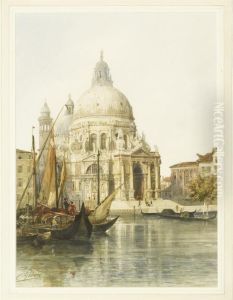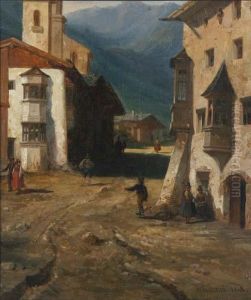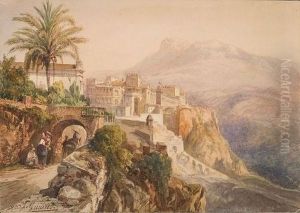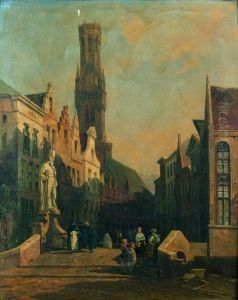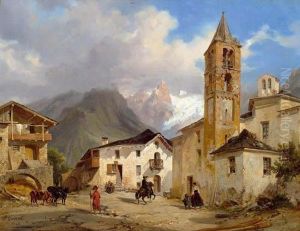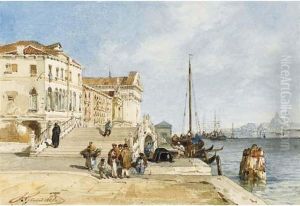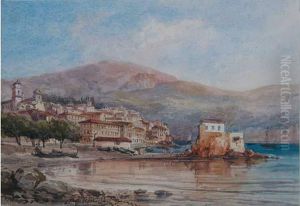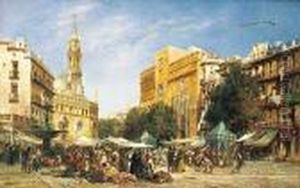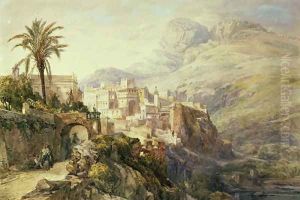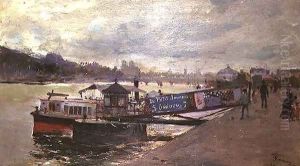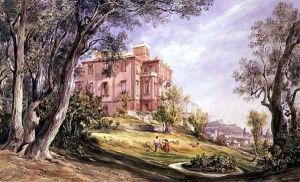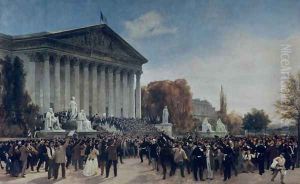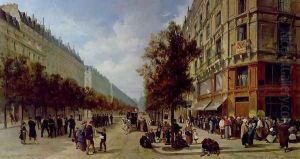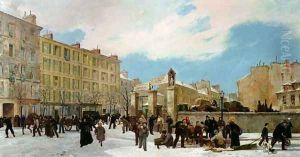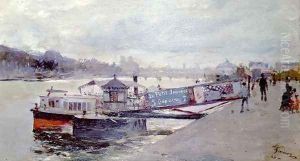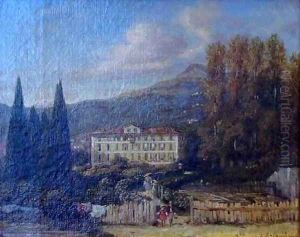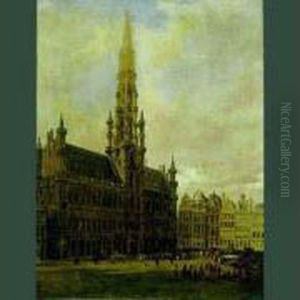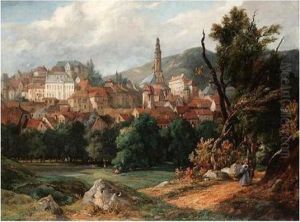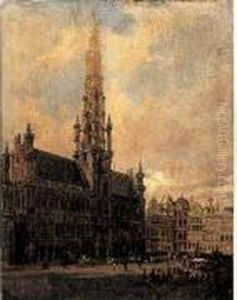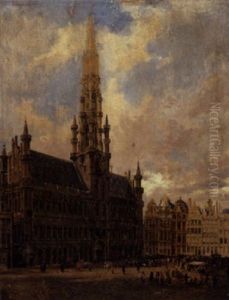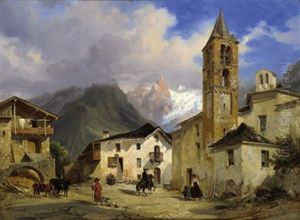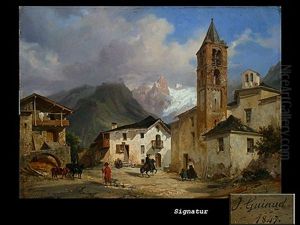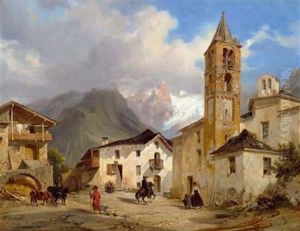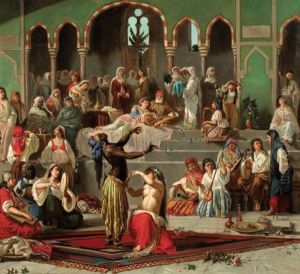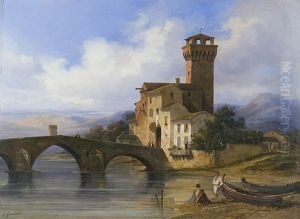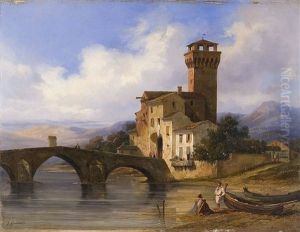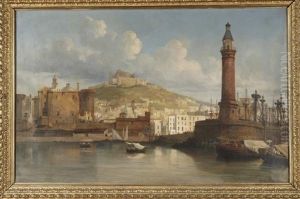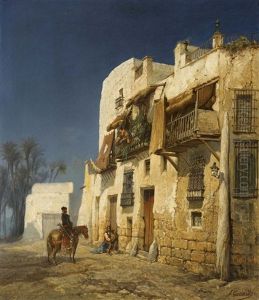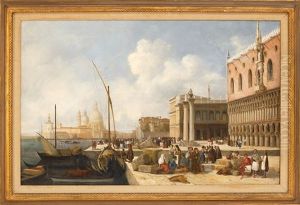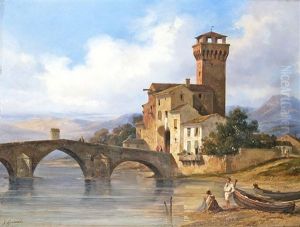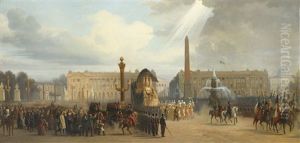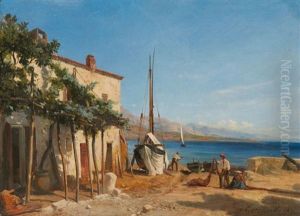Jacques Guiaud Paintings
Jacques Guiaud was a French painter and engraver known for his landscapes, city views, and architectural paintings. Born on September 25, 1810, in Chambéry, Savoie, he developed an interest in the arts at an early age. Guiaud moved to Paris to pursue his artistic aspirations and trained under various artists, including Paul Delaroche, a renowned French painter.
Throughout his career, Guiaud traveled extensively across Europe, capturing the essence of the cities and landscapes he visited in his work. He was particularly drawn to Italy, where the vivid scenery and rich historical architecture provided ample inspiration for his paintings. He depicted various locations with meticulous detail, from the bustling streets of Paris to the serene canals of Venice.
Guiaud's works were regularly exhibited at the Paris Salon, the official art exhibition of the Académie des Beaux-Arts in Paris, where he gained recognition and acclaim. His paintings are characterized by their clarity, precision, and the artist's ability to render atmospheric effects, particularly the play of light and shadow.
In addition to painting, Guiaud also worked as an engraver and illustrator. He produced a number of lithographs that were used as illustrations in books and periodicals of the time, further contributing to his reputation as a skilled artist.
Jacques Guiaud's dedication to his craft and his unique ability to capture the character of his subjects made him a notable figure in the world of 19th-century landscape and cityscape painting. He passed away on January 8, 1876, in Paris, leaving behind a legacy of work that continues to be appreciated for its historical value and artistic merit.
